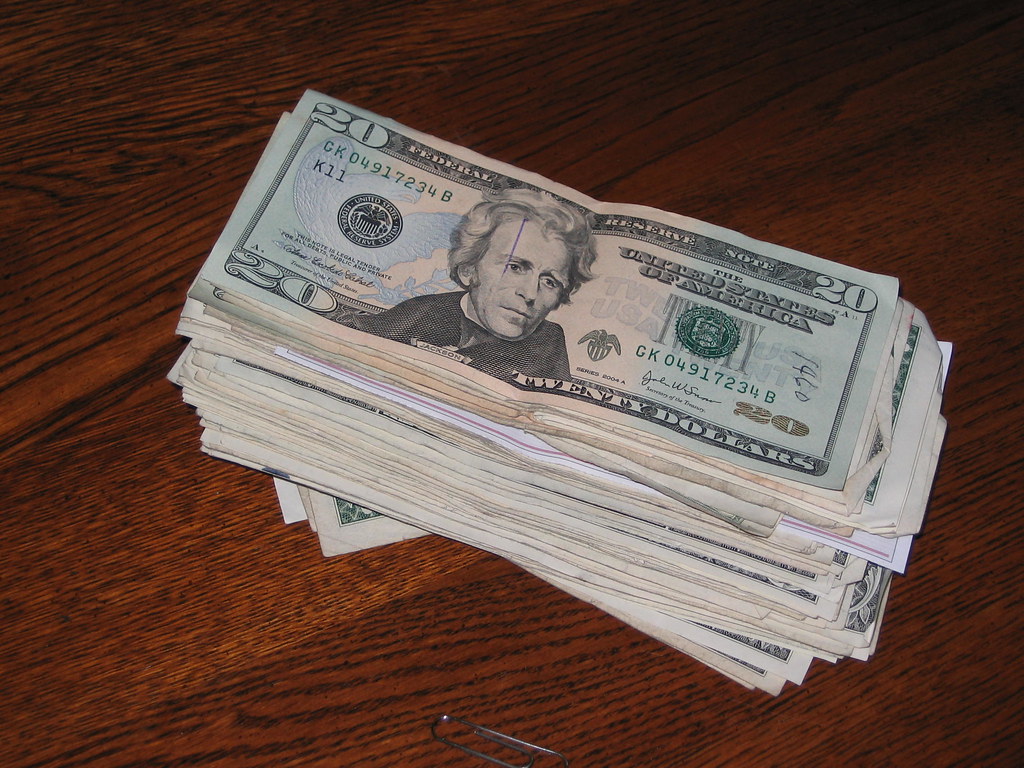It's 2013, and money is a thing. Most of us have uttered the phrase "I"d love to buy that, but..." at least once this week. We have to cut corners and closely monitor every penny we spend, and it can really get us down.
So go put your wallet somewhere out of earshot, because I'm going to encourage you to spend money on yourself.
Let's kick this off with a story. When I got my license, I inherited my mom's 1988 Ford Bronco II. Here's a photo I pulled from Google Maps.

I knew going in that this thing would be a headache. My mom, who is very delicate with her vehicles, was getting this thing repaired quite often. But to me, this was a smart choice because I had no up-front cost; the only thing I'd need to pay for is maintenance, and surely that wouldn't outweigh the cost of just buying a newer vehicle. Judging by my use of language, you know where this is going.
In the few years that I had it, I dropped thousands of dollars on repairs. I don't even want to put a humorous picture of a junky car to emphasize this point because I'm just that bitter. At one point, I was calling AAA a few times a month - the tow drivers started remembering me, for crying out loud! By the time I got rid of it, I'm pretty sure the only thing I hadn't replaced was the body.
That first car has forever shaped how I experience driving. Even after 7 years, the slightest hint of a problem in a car has me panicking. If I feel the car shift gears too slowly, or take a millisecond too long to start in the winter, I just know the thing is on its way to the graveyard.
 |
| Highway to Hell reference, anyone? |
Let's bring this back to geeky relevance. Around the time I had the Bronco, my friend Brian introduced me to Magic the Gathering, quite possibly the world's most popular trading card game.
Brian started me out with a pretty simple deck. He had me buy a theme deck, which was a sub-par deck that would let you get your feet wet. I started during the Ravnica set, which was a time when the cards were all very flavorful and went together thematically.
 |
| I'll never forget you, Agrus Kos. |
Brian, who I didn't realize was a fantastic deck builder and strategist, sat me down and gave me a few upgrades to get my deck moving.
Our first few games went as well as they could have. He made a few casual decks that were a good level for me to play against, and then I started trying to build competitive decks on my own so he could really test himself against his high-level decks.
Here's how I built decks: I'd find something fun I wanted to take advantage of life life gain, flying, creature spam, etc, and I'd build a deck around it. But everything had to fit together thematically. There was no room for a goblin in my burn deck unless he was carrying fire in his card art. Elves were elves, and there was no way I'd put another creature on the board beside them, even if it was a 100% improvement to the deck. I liked my fun, casual decks and wanted them to be competitive.
 |
| What I saw looking at my deck |
Here's how I imagine Brian built his decks (I can't say for sure, I'm still bad at it): Decide on a primary and secondary win condition. Research cards and abilities that would help him achieve his goal. Test extensively. Do they work together? If yes, play until you find a weakness to fix. If no, fix it and restart testing.
 |
| And his |
Brian would spend his off-time building decks or reading tournament reports and articles aimed at pro players.
Any off-time I dedicated to MTG was spent exclusively on Building on a Budget, which at the time promised decks costing no more than about $30.
Brian played to win no matter what. I played to win on a budget.
This wasn't necessarily a bad thing for awhile. I'd play my decks against those that were still in their development infancy. I probably won 1/4 of my games, which I was honestly happy with. My decks performed well, and they were often close games. Had we continued playing in his kitchen, MTG would have never lost its luster.
One day, the Building on a Budget author at the time made a budget storm deck using Grapeshot and Empty the Warrens as win conditions. It was a deck that could win consistently, and the only strategic input I had was when to start my combo. After several games spent learning the deck, I decided to accompany Brian to a local magic tournament. I had a rocking budget deck, and I was going make people burn their $400 decks in a mixture of awe and frustration.
That didn't happen. I did win one of my official games and one of my fun games I played against some casual players, but it was a humbling experience. Looking back, I see it as the day I realized that Magic was a game of power, and power comes with a literal cost.
But at the time, I was mad. Wizards of the Coast was forcing me to buy all these expensive cards just to be competitive. I wanted to bring a knife to a nuke fight.
 |
| And no matter how many I brought, I still got exploded. |
So I decided not to play their game. I wanted to do well in a competitive environment, but I couldn't because I wasn't willing to pay the admission price.
After all these years I've found a group of casual players with a similar budget, but even now the decks I want to build will be grossly underpowered because I'm playing a $1 version of a $15 card and pretending there's not much difference. I'm using common lands in place of rare lands. I purposely choose bad cards over good ones.
It's bad, but I can't get past my own obstinance that took root years ago. I still haven't truly experienced what Magic is all about because I refuse to use the proper tools. I want a Selesnya Aggro deck, and a Goblins deck with 4 Goblin Piledrivers, and 100 other decks I have sitting in a bookmarks folder labeled "Expensive Fun."
It's not about winning for the sake of winning. If I'm not having fun, I'm done. But in Magic, I think the greatest fun that can be found is when two people can sit down with equally powerful decks and win a battle of wits, not a battle of "who has the least crappy budget deck."
| |
| It couldn't be helped. |
Let's get back to the point of the article: why it's not a bad thing to spoil yourself. If you saw my video yesterday, you know how excited I was once I pulled the dual-action trigger. Everything about the airbrush lived up to my expectations, and that thrill hasn't worn off after sitting down and putting it to work (more on that later). I spent over double what I planned on spending, but I did so without hesitation for one reason...
I wanted to enjoy it. I originally searched around for the cheapest airbrush I could find that didn't require me to just blow through a hose to supply the air. I read countless stories about people who went cheap, and I probably still would have done it if my wife hadn't been so supportive of me doing it right. For commission painting, an airbrush isn't just a luxury item. If I'm serious about the quality and turnaround of my work, this was a mandatory investment.
Had I gone the route of my previous experiences, I know I'd hate airbrushing, and soon I'd hate painting too. I didn't want to lose my passion, so I spoiled myself. I paid the admission price, and I've never felt so good about a purchase.
So for those of you who have made it this far, thank you. Now go spoil yourself in the things that matter to you. That doesn't mean to go out and buy a $500 pair of those because you need to walk around in life. It means that if you're serious about training for a marathon, don't look at your 8 year old pair of blister-causing shoes and say "Eh, covering my feet is good enough."

Or do the Tour de France on dad's old bicycle.
Don't let a poorly-made product be the only reason you fail at something important to you, simply because you don't want to pay the price of admission.
To finish things off, I'd like to show you what I accomplished after posting my first airbrush experience yesterday:
14 models mostly basecoated, and 1 primed and ready for me to figure out the color scheme I want to use. Total time? About 4 hours of interrupted work. A good chunk of time was spent cleaning dried paint out of the nozzle (my fault) and trying to fix "overspray" which was messing up the highlights (also, I'm a dad, so there's that disruption factor). After some great advice I received from many fellow painters I'm confident I could do a large batch like this in 2 or 3 hours.
So there it is, my longest post of the year.
See you tomorrow!


.JPG)
Behemoth is so pretty I am crying a little as an ex-Khador player. Nice post and nice work.
ReplyDelete